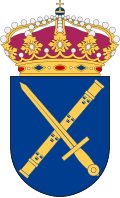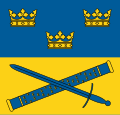
The Chief of Defence, formerly the Supreme Commander of the Swedish Armed Forces is the highest ranked professional military officer in the Swedish Armed Forces, and is by NATO terminology the Swedish chief of defence equivalent. The Chief of Defence is the agency head of the Swedish Armed Forces and formally reports to the Government of Sweden, though normally through the Minister for Defence. The primary responsibilities and duties of the Chief of Defence are prescribed in an ordinance issued by the Government.

The Chief of Army is the most senior appointment in the Swedish Army. The position Chief of Army was introduced in 1937 and the current form in 2014.
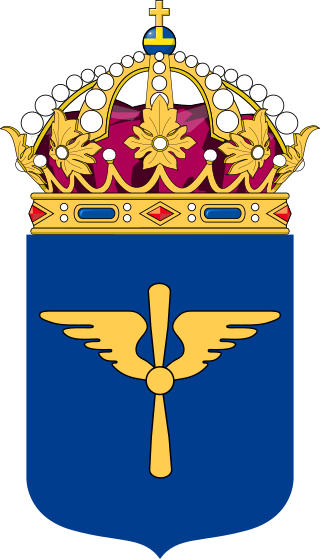
Air Staff is the staff of the Chief of the Swedish Air Force. It was officially established in 1936 due to the Defence Act of 1936 and would handle matters of a general nature. The Air Staff's duties included, among other things, assisting the Chief of the Air Force with the leadership of the Air Force's mobilization, training, tactics, organization, equipment, and personnel to the extent that such activity was not directly related to operational activities, which the Defence Staff then handled. In 1994, the Swedish Armed Forces Headquarters took over the Air Staff's duties. In 2019, the Air Force Staff was re-established in Uppsala Garrison.
The Defence Staff is the Supreme Commander of the Swedish Armed Forces' staff body and command resource for military strategic command, mission dialogue and reporting to the Swedish government, as well as being responsible for the war organization's capability, availability and combat readiness. The latter with the support of the service branch commanders and the service branch staffs.

Naval Staff is the staff of the Chief of the Swedish Navy. Established in 1907, it originated from the Fleet Staff which was established in 1896. The Naval Staff's duties included, among other things to assist the Chief of the Navy with leadership of the Navy's mobilization, training, tactics, organization, equipment and personnel to the extent that such activity was not directly related to operational activities, which was handled by the Defence Staff. In 1994, the Swedish Armed Forces Headquarters took over the Naval Staff's duties. The Naval Staff was reestablished in 2019.

Army Staff is the staff of the Chief of the Swedish Army. It was originally established in 1937. The Army Staff's duties then included, among other things to assist the Chief of the Army with leadership of the Army's mobilization, training, tactics, organization, equipment and personnel to the extent that such activity was not directly related to operational activities, which was handled by the Defence Staff. In 1994 the Swedish Armed Forces Headquarters took over the Army Staff's duties. In 2019, the Army Staff was re-established, now located in Enköping Garrison.

Maritime Component Command was a part of the Joint Forces Command of the Swedish Armed Forces. The staff was located at the Swedish Armed Forces Headquarters in Stockholm and is headed by the Chief of Navy. The Maritime Component Command commanded the operations of the Swedish Navy forces.

The Air Component Command was a part of the Joint Forces Command of the Swedish Armed Forces. The staff was located at the Swedish Armed Forces Headquarters in Stockholm. The Air Component Command commanded the operations of the Swedish Air Force.
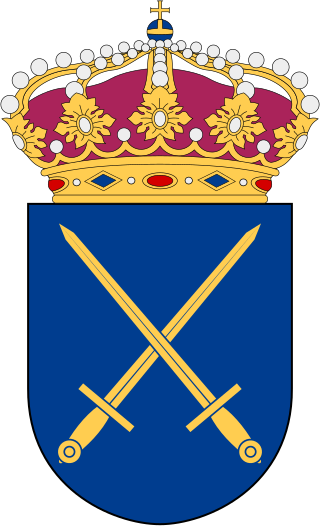
Land Component Command was a part of the Joint Forces Command of the Swedish Armed Forces. The staff was located at the Swedish Armed Forces Headquarters in Stockholm. The Land Component Command commanded the operations of the Swedish Army.

East Coast Naval Base was a Swedish Navy command body which operated in various forms between the years 1928 and 2004. It was located in Stockholm from 1928 to 1966 and then in Haninge Municipality from 1966 to 2004.

The Swedish Armed Forces Headquarters is the highest level of command in the Swedish Armed Forces. Established in 1994, its primary task is to command operations, but is also involved in areas such as military strategy, the overall development of the Swedish Armed Forces, and acting as a channel of contact with government. It's located at Lidingövägen 24 at Gärdet in Stockholm.
The Northern Military District was a military district within the Swedish Armed Forces from 2000 to 2005. Its staff was located in Boden Garrison in Boden, Sweden. The military district included Västernorrland, Jämtland, Västerbotten and Norrbotten counties.
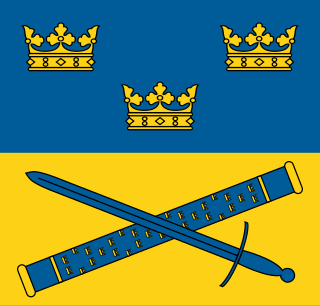
The Chief of Joint Operations (CJO) (Swedish: chefen för operationsledningen, C OPL) is a three-star role within the Swedish Armed Forces, responsible the Joint Forces Command (JFC). The Chief of Joint Operations is subordinate to the Chief of Defence and is responsible, among other duties, for operations to defend Sweden against armed attacks, as well as for operations to uphold Sweden's territorial integrity and protect Swedish interests.
The Central Military Region is a Swedish military region within the Swedish Armed Forces. Established in 2013, the military region staff in based in Kungsängen. The military region includes Dalarna County, Gotland County, Gävleborg County, Stockholm County, Södermanland County, Uppsala County and Västmanland County.
The Northern Military Region is a Swedish military region within the Swedish Armed Forces. Established in 2013, the military region staff in based in Boden Garrison. The military region includes Norrbotten County, Västerbotten County, Jämtland County and Västernorrland County.
The Western Military Region is a Swedish military region within the Swedish Armed Forces. Established in 2013, the military region staff in based in Skövde. The military region includes Halland County, Värmland County, Västra Götaland County and Örebro County.
The Swedish Armed Forces Helicopter Wing organizes all Swedish Armed Forces military helicopter operations. The unit was formed in 1998 by merging the Army, Air Force and Navy helicopter resources. The unit is located in three places in Sweden, with headquarters at Malmen Airbase in Linköping.
The Swedish Armed Forces Logistics is a part of the Swedish Armed Forces, which is responsible for military logistics, maintenance and support for units, staffs and schools. The unit's activities can be divided into supply, transport, support for international operations and functional management.
The Central Military District was a military district within the Swedish Armed Forces from 2000 to 2005. Its staff was located in Strängnäs, Sweden. The military district included Stockholm, Uppsala, Södermanland, Östergötland, Värmland, Örebro, Västmanland, Dalarna and Gävleborg counties.
The Central Air Command was an air command within the Swedish Air Force that operated from 1994 to 2000. The unit was based in Bålsta in Uppsala Garrison. It was responsible for air surveillance over Central Sweden.
